“With vowels and consonants you make words, with words you make thoughts, with thoughts you think letters, with the Lettera 22 you write”: so went a famous advertising claim for Olivetti’s celebrated Lettera 22 typewriter, perhaps the most famous typewriter in history. Featured inside countless films, the trusted companion of so many journalists and writers, an inseparable working tool for thousands of people, an object with a neat, elegant and recognizable design, so much so that it became part of museums such as the Triennale Design Museum in Milan and MoMA in New York, the Lettera 22 was one of the most successful typewriters ever. It was designed between 1948 and 1950 by architect and designer Marcello Nizzoli (Boretto, 1887 - Camogli, 1969), based on a design by engineer Giuseppe Beccio, and was launched on the market in 1950 by Olivetti, at the affordable cost of 42,000 lire (about 800 euros today: it was a much lower cost than professional typewriters). Nizzoli, who had already designed another typewriter for Olivetti (the Lexikon 80), was inspired to design his Lettera 22 by the design that had preceded it, the Olivetti MP1 machine that came out in 1932, designed by Riccardo Levi and designed by Aldo Magnelli. Right from the start, the new machine was characterized by its lightness, practicality and ease of use, as well as its elegant design.
It was sold in an attractive case with a handle, which, combined with its weight of only four kilograms and small size (8.3 by 29.8 by 32.4 centimeters), made it easily transportable. It was in fact the first portable typewriter ever produced. It was equipped with a QZERTY keyboard, the old key layout typical of writing instruments for the Italian language (the system would later be supplanted by today’s universal QWERTY, which originated for English). The keyboard was recessed into the body, with the roller embedded inside without protruding out of the box (except for the knob and spacing lever: the footprint was thus minimal). The body was also divided into two parts, one of which lifted up to replace the writing tape and allow the hammers to be cleaned.
Letter 22 made use of a pressure-writing system: in fact, each key levered a small hammer that tapped on the inked ribbon, printing the corresponding letter, embossed on the hammer, on the paper. The mechanical typing process used by the Letter 22 was reliable, precise and very fast, despite some features that would appear to us today to be quite singular: for example, the number 1 key was missing, and in order to write the corresponding number it was necessary to obtain it, in practice, with a capital “I” or a lowercase “l.” Same with the zero, which was obtained with an “O.” Also missing were all accented characters: at that time, accents were rendered with apostrophes after the corresponding vowel. These absences (which, however, also characterized the old MP1) were motivated by the need to keep the size down, and were, however, compensated for by some innovations such as the automatic change of movement direction, the tabulation key, and the possibility of writing in red or black. And still, it enabled its users to write documents and notes quickly and accurately, making it an important piece of equipment for the office, work, and daily life. It was, after all, as Elena Papa wrote, “a machine designed to enter into the habits of Italians,” with the consequence that even the name itself had to be familiar (hence why an Italian, not a foreign name was chosen). Indeed, as an advertising slogan put it, “Olivetti Lettera 22 bears in its name, with the quality of its origin, its destination.” Twenty-two, probably because twenty-one are the letters of the Italian alphabet, and the machine was intended to stand as an ideal extension of the writing system of the Italian language.
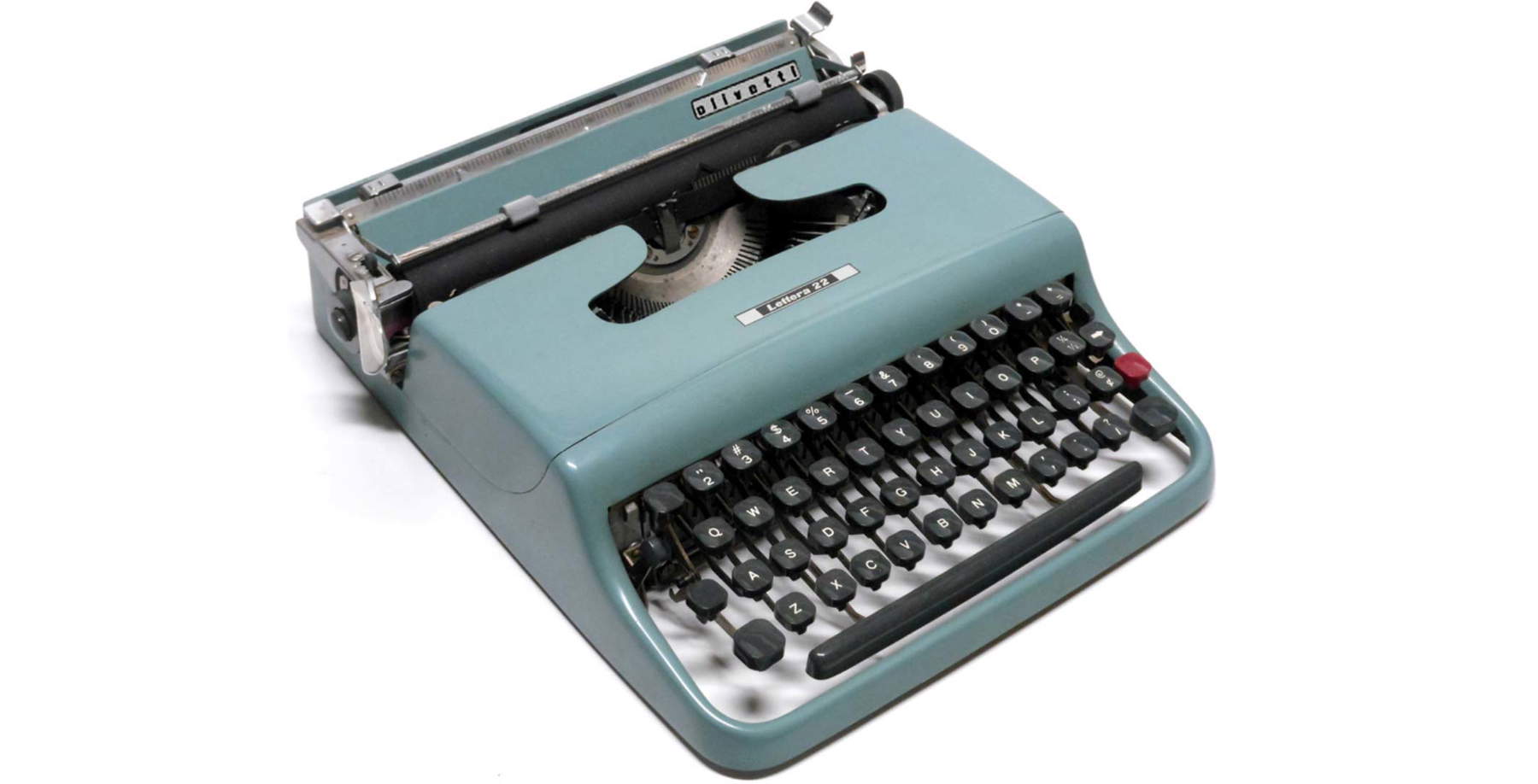
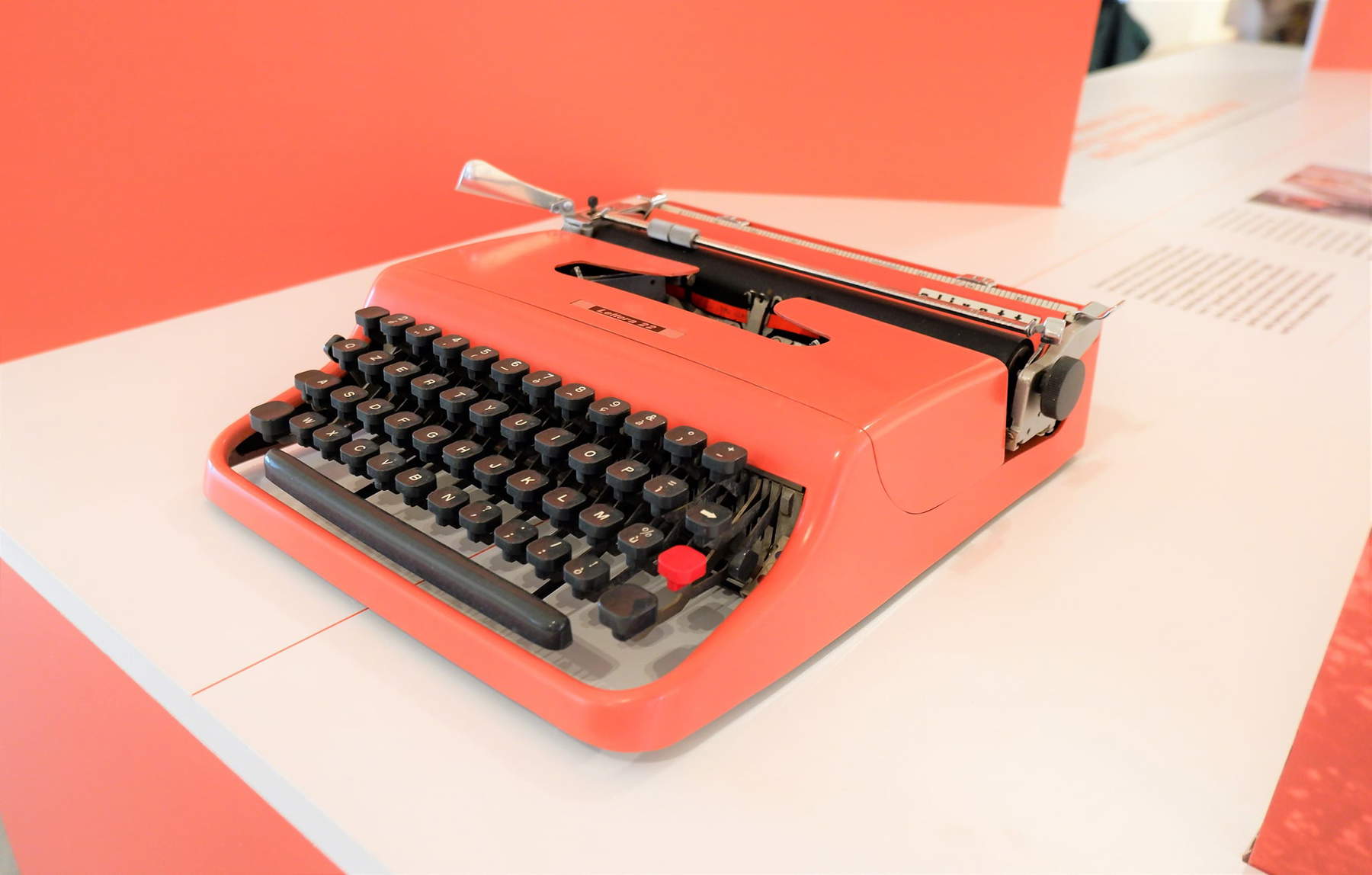
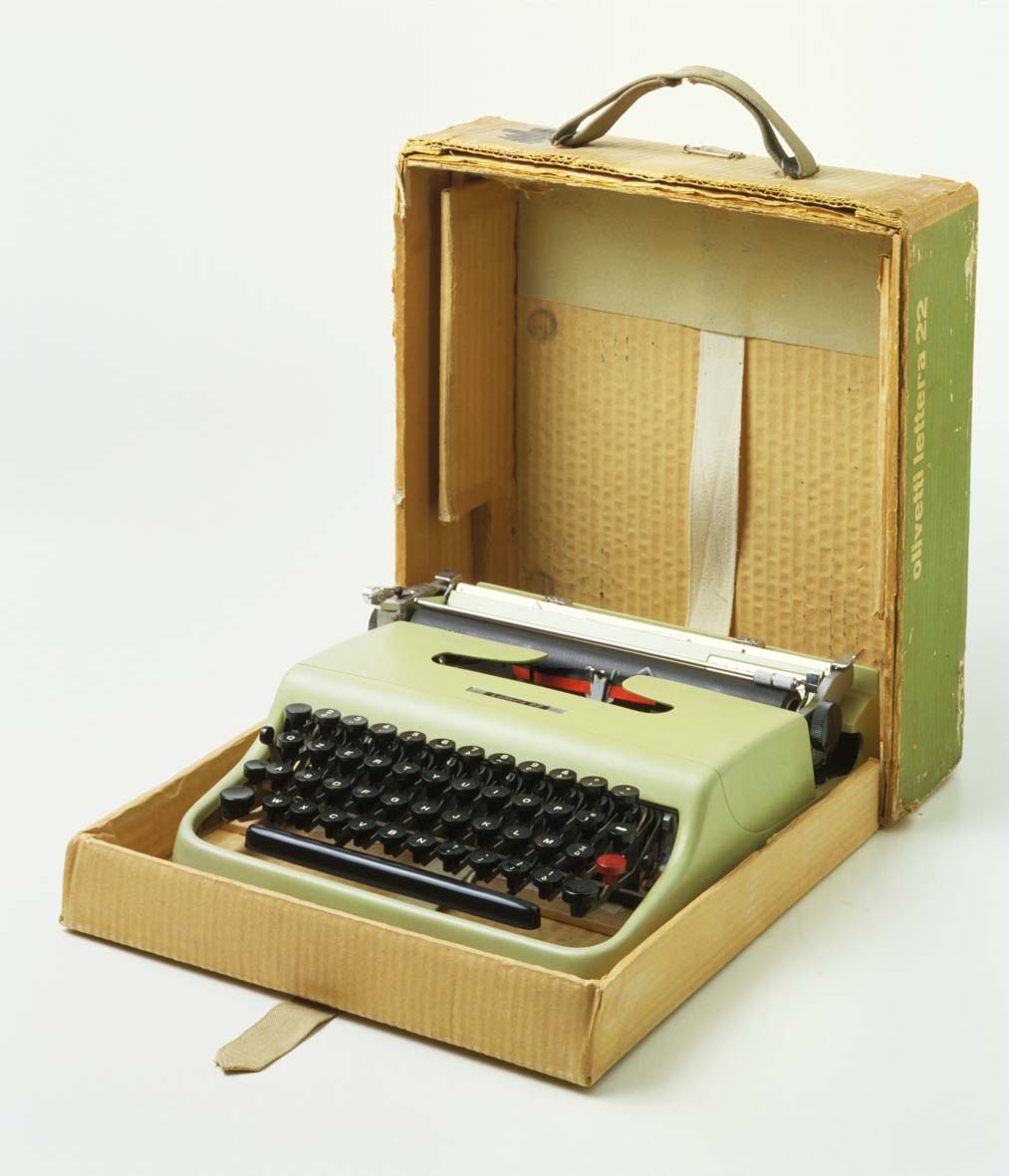

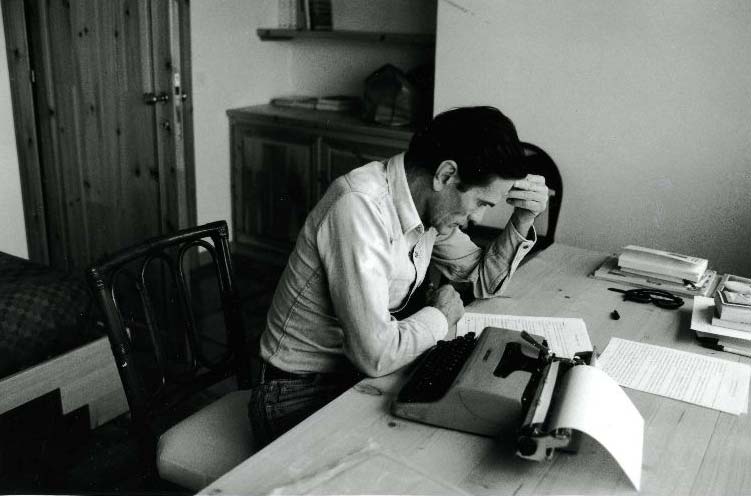
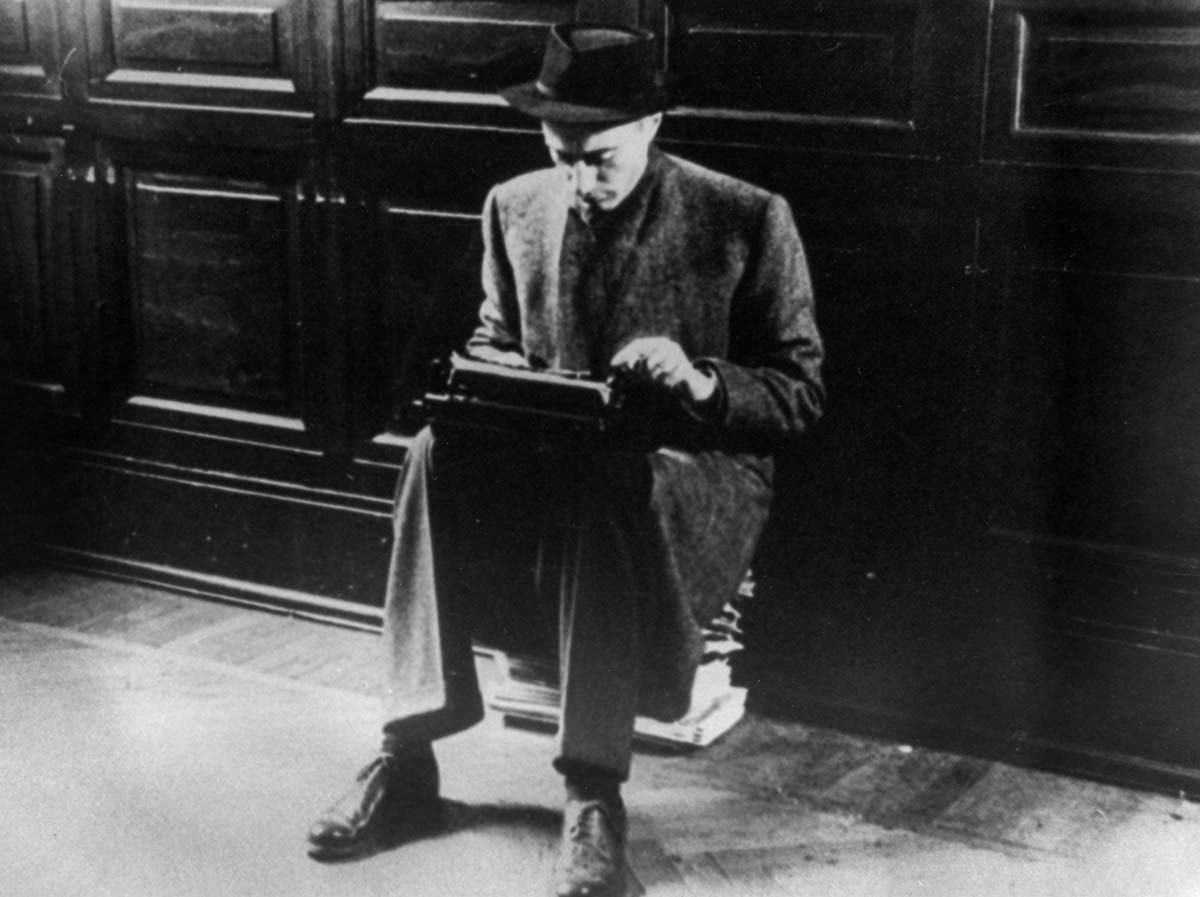
In addition, the Lettera 22 was designed with a modern and elegant style that made it immediately attractive. It had a compact and light shape that made it easily transportable, it was available in different colors, always however with light and cool tones (beige, embossed beige, light blue, green and pink) that did not distract users but still made it a colorful addition to the office, it was produced with high quality materials (the body was made of aluminum) in the Olivetti factory in Agliè near Turin. All these features earned it the Compasso d’Oro award in 1954 and, in 1959, recognition as the best design product of the century by the Illinois Technology Institute.
Lettera 22 was a “revolutionary machine, light, solid and compact, and, above all, intended for everyone,” as Emilia Garda and Giuliana Di Mari wrote: “A symbol of Italian-ness and an icon of style, it was the chosen one of such illustrious personalities as Pier Paolo Pasolini, Enzo Biagi, Indro Montanelli, Ernest Hemingway, Leonard Cohen, and Oriana Fallaci.” Garda and Di Mari attribute its success not only to its unparalleled value for money (the performance the machine offered was in fact of a very high level compared to the cost required to purchase it), but also to the numerous advertising campaigns that supported the Lettera 22: in fact, the affordable price made it necessary for Olivetti to produce a substantial quantity, which touched a rate of two thousand units per year in the 1960s.
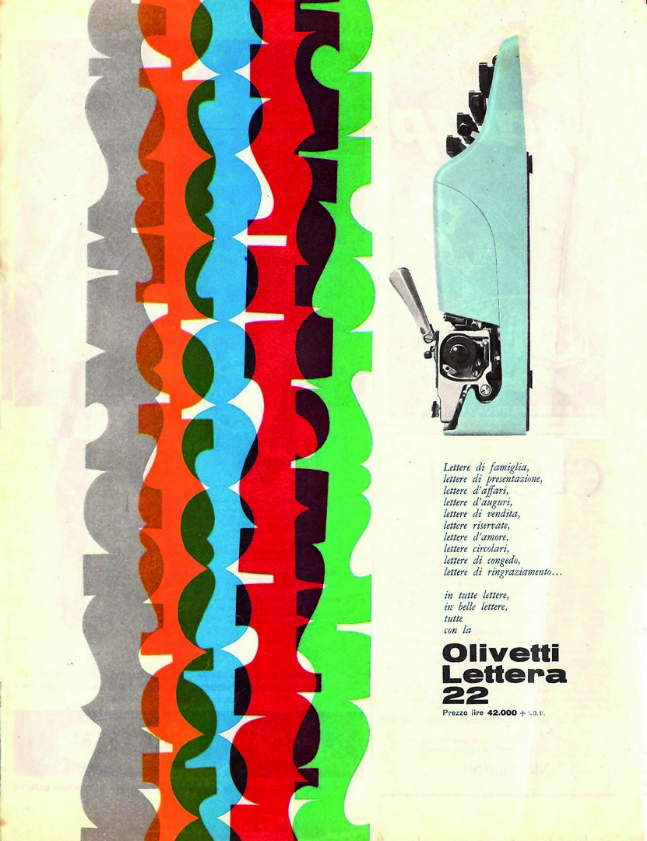

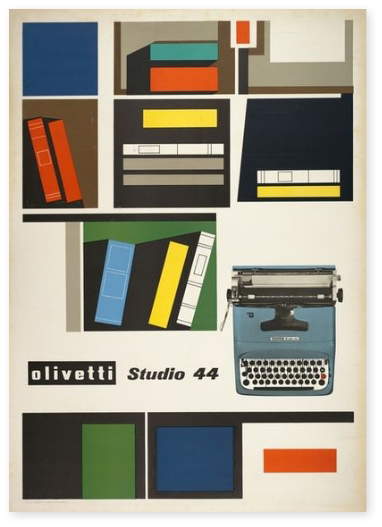


Lettera 22’s campaigns were distinguished by elegant texts, some of which were also signed by writers such as Franco Fortini (to whom we owe the phrase “light as a syllable, complete as a sentence), by the punctuation typical of poetic ascription (”Everyday letters / domestic writings / copies of documents / will be order and clarity / on this laptop / discreet light easy / to the less experienced hand. / On this laptop / which accompanies you everywhere / at home as well as on the road / you will write the words / that unite you / to the world of friends / and to the world of your work,“ or again ”Family letters, letters of introduction, business letters, letters of greetings, sales letters, confidential letters, love letters, circular letters, letters of leave-taking, letters of thanks...in all letters, in beautiful letters, all with the Olivetti Lettera 22."), as well as for Giovanni Pintori ’s graphics with their understated geometries and juxtapositions between Lettera 22 and everyday objects. “The advertising campaigns for Lettera 22,” Garda and Di Mari write further, "push on the involvement of the buyer sometimes trespassing on colloquial language, and there is no shortage of posters constructed ad hoc for specific themes such as holidays or school, the typewriter being the ideal gift to offer along with a bouquet of flowers and the precious tool for the student." What’s more, the famous images of Pasolini concentrating on the machine, or Montanelli with his knees bent intent on writing, became in their own way great advertising vehicles for Lettera 22.
The Lettera 22 was a great commercial success for Olivetti and was produced until 1965 (an estimated two million left the Olivetti factories), with slight modifications: for example, models with white instead of black keys came out, an edition called “Pluma 22” came out in Spain (with an untranslatable double meaning in Italian since “pluma” in Spanish means both “pen” and “feather,” and thus alluded to the machine’s function, that of making people write, and its lightness), and then there was also a model with square keys. Letter 22 was then gradually replaced by computers, printers and generally more advanced writing systems. However, it is still considered a piece of technology history and many people nowadays collect it as a vintage item. A milestone in the history of writing technology, an object that many writers and journalists never parted with, and therefore also linked to the history of literature and journalism, its design and practicality have made it a cult piece for many generations. But not only that: it is possible to consider Lettera 22 as a symbol of the radical economic and social transformations of Italy in the years of the economic boom. As scholar Emilio Renzi has written, “It captures to such a degree the changing times from the straits of war and postwar times that it became, like the Vespa and Lambretta, later the Fiat 500, the image of the new Italy of the 1950s and 1960s.”
Warning: the translation into English of the original Italian article was created using automatic tools. We undertake to review all articles, but we do not guarantee the total absence of inaccuracies in the translation due to the program. You can find the original by clicking on the ITA button. If you find any mistake,please contact us.